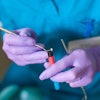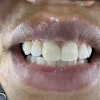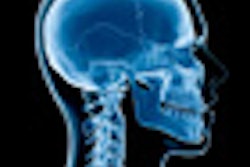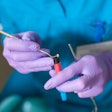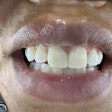Patients with implants lose bone at an accelerating rate, according to a study conducted at the University of Gothenburg.
"Contrary to what we had previously assumed, the bone loss in these patients was not linear, but instead accelerated with time," said lead author Christer Fransson, a consultant dental surgeon, in a press release. "This is a new discovery that shows just how important it is to detect and treat bone loss around implants at an early stage."
The researchers also found increased levels of bone loss in patients who had a large number of implants, patients who had inflammation around their implants, and patients who smoked. The findings reinforced previous studies suggesting that the attack of microorganisms and inflammation are key factors in causing bone loss.
The study is Dr. Fransson's master's degree thesis. The university posted it on its Web site and publicized it with a press release that was picked up in several consumer publications last month. An earlier version was published in Clinical Oral Implants Research (August 2005, Vol. 16:4, pp. 440-446).
The researchers examined the records of 662 patients who had implant-supported fixed dentures or single implants for at least five years. Of these, 184 (24%) had at least one implant with progressive bone loss. Of the 3,413 implants included in the study, 423 showed bone loss, which the researchers defined as a reduction of bone around one or more threads of the implant (≥ 0.6 mm).
The investigators found that age, gender, reconstruction type, function time, and maxillary or mandibular position of the implants did not affect the probability of having bone loss. However, the probability of having pus, recession, and probing pocket depth 0.6 mm or more was between 2.3 and 4.6 times higher at implants with bone loss than at those without.
"It's important to examine the tissues around implants in the same way as we examine the tissues around teeth," Dr. Fransson said. "In that way we can notice early signs of inflammation and treat it before the bone loss has any serious consequences."
Each patient had a mean number of 2.3 implants with bone loss; for smokers, the number was 3.2, while it was 1.7 for nonsmokers.
A key finding was that bone loss increased over time. The trend conflicts with established criteria for determining the success of implants, which typically specify a linear progression. For example, according to Albrektsson et al (International Journal of Oral and Maxillofacial Implants, Summer 1986, Vol. 1:1, pp. 11-25), implants should not lose more than 1.5 mm in the first year and should lose less than 0.2 mm a year after that.
If bone loss accelerates, that criteria shouldn't be used.
Copyright © 2010 DrBicuspid.com
